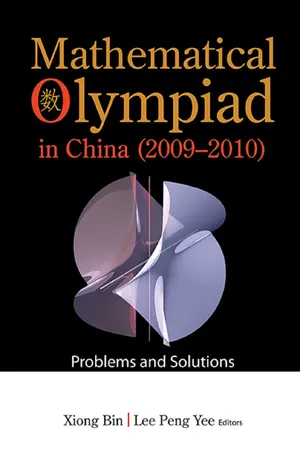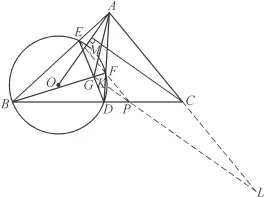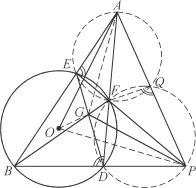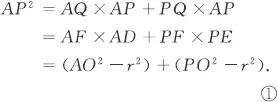
Mathematical Olympiad In China (2009-2010): Problems And Solutions
Problems and Solutions
- 204 pages
- English
- ePUB (mobile friendly)
- Available on iOS & Android
Mathematical Olympiad In China (2009-2010): Problems And Solutions
Problems and Solutions
About this book
The International Mathematical Olympiad (IMO) is a competition for high school students. China has taken part in the IMO 21 times since 1985 and has won the top ranking for countries 14 times, with a multitude of golds for individual students. The six students China has sent every year were selected from 20 to 30 students among approximately 130 students who took part in the annual China Mathematical Competition during the winter months. This volume of comprises a collection of original problems with solutions that China used to train their Olympiad team in the years from 2009 to 2010. Mathematical Olympiad problems with solutions for the years 2002–2008 appear in an earlier volume, Mathematical Olympiad in China.
Contents:
- 2008–2009 China Mathematical Competition
- 2008–2009 China Mathematical Competition (Complementary Test)
- 2009–2010 China Mathematical Olympiad
- 2009–2010 China National Team Selection Test
- 2008–2009 China Girls' Mathematical Olympiad
- 2008–2009 China Western Mathematical Olympiad
- 2009–2010 China Southeastern Mathematical Olympiad
- 2009–2010 International Mathematical Olympiad
Readership: Mathematics students, school teachers, college lecturers, university professors; mathematics enthusiasts.
Frequently asked questions
- Essential is ideal for learners and professionals who enjoy exploring a wide range of subjects. Access the Essential Library with 800,000+ trusted titles and best-sellers across business, personal growth, and the humanities. Includes unlimited reading time and Standard Read Aloud voice.
- Complete: Perfect for advanced learners and researchers needing full, unrestricted access. Unlock 1.4M+ books across hundreds of subjects, including academic and specialized titles. The Complete Plan also includes advanced features like Premium Read Aloud and Research Assistant.
Please note we cannot support devices running on iOS 13 and Android 7 or earlier. Learn more about using the app.
Information
China National
Team Selection Test
2009 (Wuhan, Hubei)
First Day
(0800 – 1230; March 31, 2009)






















Table of contents
- Cover
- Title Pagina
- Copyright
- Editors
- Preface
- Introduction
- China Mathematical Competition
- China Mathematical Competition (Complementary Test)
- China Mathematical Olympiad
- China National Team Selection Test
- China Girls’ Mathematical Olympiad
- China Western Mathematical Olympiad
- China Southeastern Mathematical Olympiad
- International Mathematical Olympiad